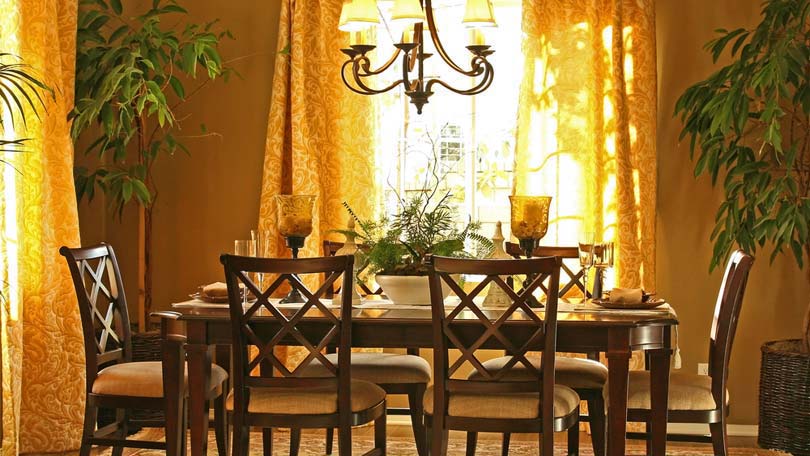
Things to Consider
A dining room table isn’t just any piece of furniture: you’ll need to choose well, because you’ll be living with your choice for a long time. Dining room tables tend to last longer than sofas, coffee tables, and even beds—chances are, you’ll have yours throughout numerous moves, and may even pass your table on to your children. So when you’re choosing your next dining room table, consider more than taste. Here are a few things to look for to make sure your dining room table fits your needs.
Size. The bigger your dining room, the bigger your table—right? Well, not necessarily. You should work with the space you have when picking a dining room table—but you should also consider the amount of people you intend on hosting. What if you have a sizable dining room, but only host large parties occasionally—if ever? The problem with a big dining room table and a smaller gathering is that it’s difficult for a small group of three or four to converse around a table that seats twelve. If you rarely host large parties, consider buying a smaller dining room table that folds out with leaves—or even two tables that can be pushed together in a pinch. That way, the size will be there when you need it—not when you don’t.
Shape. Dining room tables typically come in square or rectangular, round or oval shapes. In general, round or ovoid shapes are better for smaller groups—if it gets too big, a rounded table also gets wide, making it hard for guests to converse across a space. An oval or round dining room table that accommodates twelve, say, is much bigger than a rectangular table that accommodates the same amount. In general, rectangular tables are better for large groups, oval tables better for medium-sized groups of around five or six, and square and round tables are better for small groups.
Material. It’s best to choose material that reflects materials used elsewhere in the house. Darker woods such as mahogany and walnut tend to have a fancier, more formal feel; oak, cherry and pine are more relaxed and casual. If you have kids who’ll be doing homework and activities on this table, it’s best to go with the relaxed and casual feel; you won’t mind the scratches and spills as much. If you’re particularly concerned about scratches marring your veneer, consider an antique table with carvings that hide surface irregularities a little better than a smooth finish will. For more contemporary designs, consider glass—it resists stains and chips much better than wood does. The one downside with glass is that it’s more difficult to find a glass table that extends.
Family friendliness. People with young children may want something different in a dining room table than those without. As we said before, a casual wooden table is often better for households with kids than a formal one—kids often use dining room tables as gathering places, homework zones, and places to do crafts and activities, and those will be no fun if Mom and Dad are worried about spills and scratches. While glass is less likely to scratch, it also shows fingerprints and water rings more clearly, and it takes some diligence to stay clean. In addition, square tables have edges that can be dangerous for a toddler just learning to walk, or for kids roughhousing in the dining room. If you have a young family, consider an oak, cherry or pine table in a round or oval shape.
Old or new. An antique dining room table can bring some history to your dinner parties—it’s a great conversation piece, and chances are nobody else in your group of friends and family has one quite like it. Antique dining room tables often come with beautiful carvings and handcrafted workmanship that you just don’t find in today’s modern, often mass-produced furniture. However, if you have your heart set on an antique dining room table, you’ll need to make sure it suits your needs before you buy.
If the table is expandable, make sure you take the leaves out before you buy it—if the table hasn’t been properly maintained, it may be hard to expand it, or the leaves may not have been refinished with the rest of the table and may not match. In addition, check the height to make sure you can sit comfortably. Sit down at the table with a chair similar in height to the ones you plan on using. Since they are mostly handmade, antique tables come in diverse heights—some of which you may not find comfortable. Antique tables also sometimes come with overhangs that can get in the way of your legs if your chairs are too tall.
Your dining room table will be with you for a long time—so make sure you pick one you can live with. Size, shape, finish and look are all important—but so are functionality issues. If you give yourself some time to shop around, chances are you’ll find a table that you’ll love for years to come.





